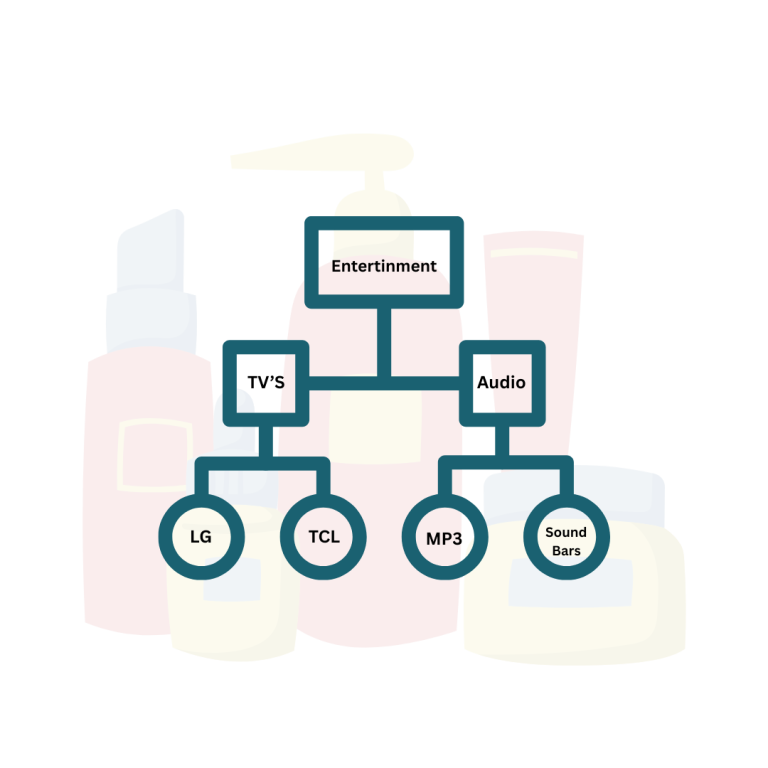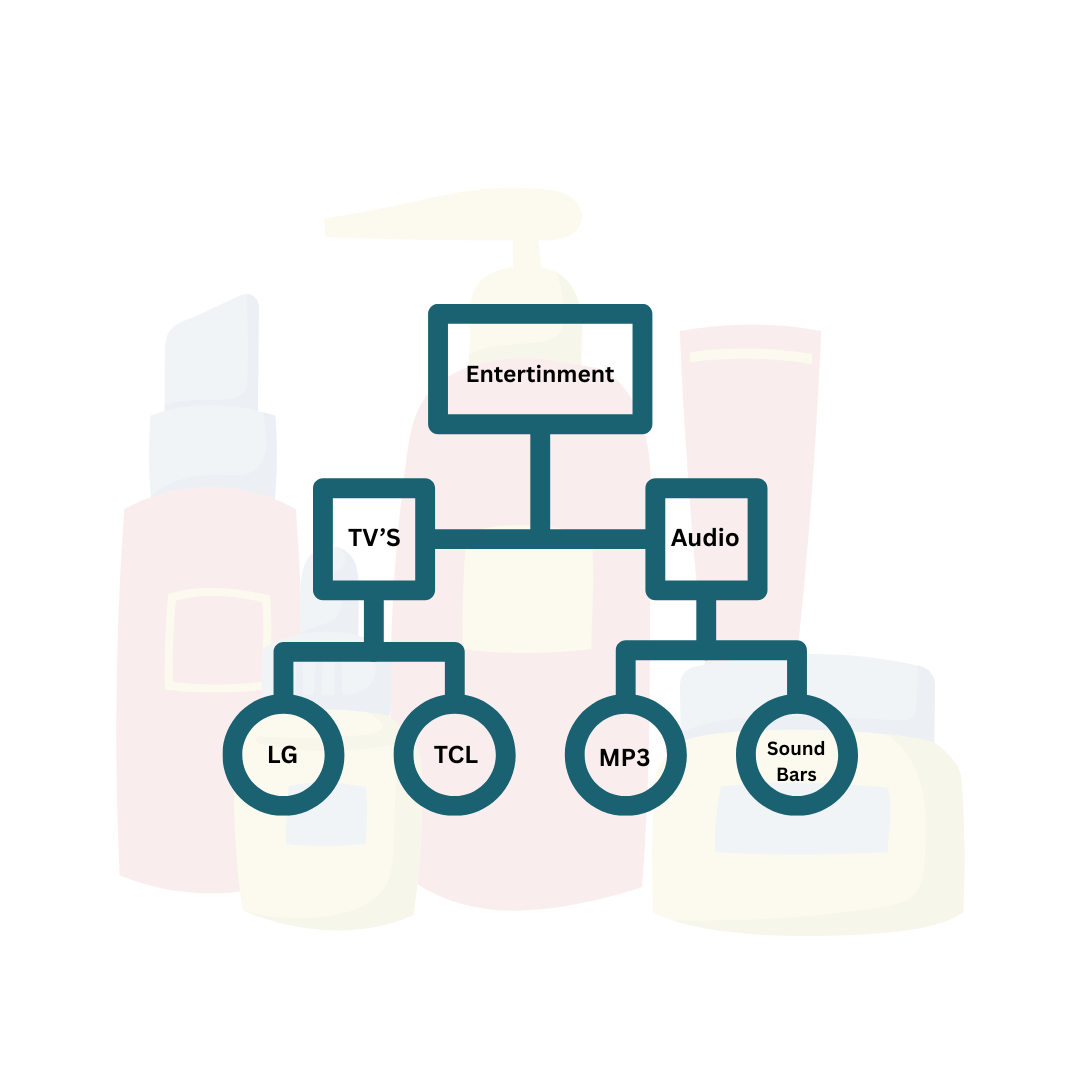Introduction
Did you know that a well-structured product taxonomy can significantly improve your product visibility and boost sales?
We’ve found that effective product taxonomy essentially acts as a digital map, guiding your customers through a seamless shopping journey.
But what exactly is product taxonomy?
In business and ecommerce, product taxonomy refers to the hierarchical organization of your products into logical, searchable categories. Without a clear ecommerce product taxonomy, businesses often face confusion regarding product definitions and ownership, which directly leads to lost revenue opportunities.
As we approach 2025, mastering your product taxonomy becomes even more crucial.
Modern solutions like Product Information Management (PIM) systems, Digital Asset Management (DAM) tools, and Global Data Synchronization Network (GDSN) have transformed how businesses organize and present their product catalogs.
Indeed, implementing these technologies alongside smart taxonomy practices can enhance user experience, streamline inventory management, and, importantly, create personalized customer experiences that foster loyalty.
What is Product Taxonomy and Why It Matters
Product taxonomy forms the backbone of every successful physical and online store. When I first encountered this term, I immediately recognized its power to transform how customers find and purchase products.
Definition and Meaning of Product Taxonomy
Product taxonomy originated from Greek, where “taxis” means organization or arrangement. In practical terms, it’s a hierarchical classification system used to organize and categorize products within an ecommerce platform. This structure typically includes parent categories (main groups), child categories (subcategories), and various attributes that describe product characteristics.
The system works by grouping products based on their inherent characteristics and relationships, creating a logical framework that both your team and customers can navigate intuitively. Think of it as creating a map for your digital store—where each aisle, shelf, and product has its designated place.
A complete product taxonomy includes several key components:
- Clear definition and classification of products
- Hierarchical structure with parent-child relationships
- Consistent naming conventions across channels
- Flexibility to accommodate new products
- Integration with business processes
How Taxonomy Fits into E-commerce and Business
For e-commerce sites, product taxonomy serves as the foundation for navigation, search functionality, and overall user experience. According to research, e-commerce sites sell 50% less when they have a poor taxonomy structure. This dramatic impact occurs because taxonomy directly influences how easily customers can find what they’re looking for.
Furthermore, taxonomy streamlines internal business operations in several ways. A well-structured system improves communication within your company, prevents sales of outdated products, and clarifies product ownership. When every item is properly categorized, tracking inventory, forecasting demands, and identifying gaps becomes significantly easier.
On the technical side, proper taxonomy ensures your search functionality works effectively. As the saying goes, “garbage in, garbage out”—the quality of your search results is only as good as the quality of your product taxonomies. Without this foundation, even the most sophisticated search algorithms will struggle to deliver relevant results.
Why Store Owners Should Care
As we move toward 2025, several factors make product taxonomy more crucial than ever. First, customer expectations for seamless shopping experiences continue to rise. When visitors can’t find what they want quickly, 61% will leave your site within just 5 seconds—a statistic no store owner can afford to ignore.
Moreover, the growing complexity of omnichannel retail demands consistent taxonomy across all platforms. This is where specialized solutions come into play:
Product Information Management (PIM) systems help centralize and standardize your taxonomy across all sales channels, ensuring consistency whether customers shop on your website, mobile app, or through marketplaces.
Digital Asset Management (DAM) tools work alongside your taxonomy to organize product images, videos, and other visual assets, maintaining consistency in how products are presented visually.
Global Data Synchronization Network (GDSN) facilitates the exchange of standardized product information across global supply chains, becoming increasingly important as e-commerce continues to break down geographical barriers.
Additionally, proper taxonomy dramatically improves your SEO performance by helping search engines understand your site structure. When your product hierarchy aligns with common search terms, your pages are more likely to appear in relevant search results, including platforms like Google Shopping.
In an increasingly competitive digital landscape, mastering product taxonomy offers a significant advantage—creating better experiences for customers while simultaneously improving your operational efficiency and bottom line.
Core Elements of a Product Taxonomy
Building an effective product taxonomy requires understanding its fundamental building blocks. Let’s examine the core structural elements that create a coherent framework for organizing your product catalog.
Categories and Subcategories

The foundation of any product taxonomy starts with broad categories that branch into more specific subcategories. This hierarchical structure creates a logical pathway for navigation. I’ve found that categories should represent your product catalog’s major divisions, while subcategories further refine these groupings.
For instance, an electronics retailer might structure their taxonomy with categories like “Home Entertainment” at the top level, followed by subcategories such as “Televisions,” “Audio Systems,” and “Gaming Consoles.” This parent-child relationship helps shoppers intuitively navigate through your inventory.
Product Information Management (PIM) systems excel at maintaining these hierarchical relationships, ensuring consistency across all sales channels. With a PIM solution, you can centrally manage your category structure and deploy it uniformly across your entire digital ecosystem.
Product Attributes and Filters
Product attributes add specificity to your taxonomy by describing characteristics that differentiate items within categories. These attributes serve as the foundation for filtering options that empower customers to refine their searches based on specific criteria.
Common attributes include:
- Physical characteristics (size, color, material)
- Technical specifications (resolution, processing power)
- Practical details (weatherproof rating, durability)
Filters transform these attributes into actionable search tools. According to research, 84% of major e-commerce sites provide inadequate filtering experiences, highlighting a significant opportunity for competitive advantage through better attribute management.
Digital Asset Management (DAM) systems particularly strengthen your attribute management by organizing visual assets that illustrate product characteristics, maintaining consistency in how products are presented visually across platforms.
Tags, Labels, and Metadata
Behind the visible taxonomy structure lies a rich layer of metadata—descriptive information that powers search functionality and improves product discoverability. Tags and labels are user-facing elements of this metadata, helping to group products across categories based on shared characteristics.
Tags function differently from categories in that they’re non-hierarchical and can connect products across different category branches. For example, “Holiday Collection” tags might span multiple departments, creating thematic connections that categories alone cannot provide.
GDSN (Global Data Synchronization Network) facilitates standardized metadata exchange across global supply chains, ensuring your taxonomy remains consistent with industry standards, particularly valuable for multi-channel retailers.
Examples from Fashion, Electronics, and Home Decor
Fashion retailers often structure taxonomies around clothing types (tops, bottoms, outerwear), with attributes focusing on material, size, and style. Leading brands frequently incorporate occasion-based categories like “Workwear” or “Festive Collection” to create intuitive shopping experiences.
Electronics taxonomies typically organize products first by device type, then by technical specifications. Subcategories might include “Gaming Laptops” or “Smart TVs,” with attributes focusing on processing power, display technology, and connectivity options.
Home décor taxonomies generally follow room-based organization (Living Room, Bedroom, Kitchen) supplemented by style-focused subcategories. Visual filters are particularly effective here, as they help shoppers identify attributes like “Modern” or “Rustic” styles that might be difficult to articulate through text alone.
Ultimately, these core elements work together to create a seamless discovery experience, transforming your product catalog into an intuitive digital storefront that guides customers efficiently to their desired purchases.
How to Build a Product Taxonomy from Scratch
Creating a product taxonomy from scratch requires methodical planning and structured execution. Following these proven steps will help you build a taxonomy that enhances both customer experience and operational efficiency.

1. Research Your Market and Competitors
Initially, examine how competitors organize their products. This market research reveals category structures and naming conventions that resonate with your audience. Beyond analyzing direct competitors, explore e-commerce stores you enjoy browsing to identify what makes their structure intuitive. Use tools like heat maps to understand how users navigate sites in real-time, gaining insights into conversion rates and potential pain points in the user journey.
Pay close attention to on-site search data—what customers type into search bars provides invaluable guidance for your taxonomy structure. These real-world interactions reveal the exact language your customers use when looking for products.
2. Define Categories and Subcategories
Start by determining large, general buckets for different product types. These overarching categories might include divisions like “Men,” “Women,” or broader classifications like “Electronics” or “Home Goods.”
A critical best practice is maintaining as few top-level categories as possible without sacrificing organization. Too many options quickly lead to decision fatigue. Once primary categories are established, create intuitive subcategories that reflect how users search. Continue this process until all products fit within a logical hierarchical structure.
Consequently, avoid using vague terms like “Other” as a category—these rarely help customers find what they need.
3. Map Attributes to Product Types
Next, catalog all products with comprehensive metadata: specifications, materials, price points, and distinguishing characteristics. This foundation allows you to map specific attributes to each product type, creating powerful filtering options.
PIM (Product Information Management) systems excel here by centralizing attribute management across all sales channels. Meanwhile, DAM (Digital Asset Management) tools ensure visual assets consistently align with your taxonomy structure, maintaining cohesive presentation.
4. Create Templates for Consistency
Standardization is key for efficient taxonomy management. Develop product category templates that define the relevant attributes for each type of product. These templates ensure consistency across listings while making filtering and comparison easier for customers.
GDSN (Global Data Synchronization Network) facilitates standardized product information exchange, particularly valuable when distributing products through multiple channels or globally.
5. Test and Refine with Real Users
Finally, validate your taxonomy through rigorous testing. Methods include:
- Card sorting: Have users organize products into categories to validate groupings
- Tree testing: Observe how users navigate pathways to find specific items
- Continuous refinement: Regularly revisit your taxonomy based on actual usage data
Remember that taxonomy development is never truly complete. Regularly audit your structure based on changing market trends and customer behaviors. As your product catalog evolves, so should your taxonomy.
Tools That Support Taxonomy Management
Several powerful tools have emerged to address the challenges of taxonomy management in modern ecommerce. These specialized systems not only simplify organization but also ensure consistency across all your sales channels.

How PIM Systems Help with Taxonomy
Product Information Management (PIM) systems serve as the central command center for your product taxonomy. These platforms allow you to auto-categorize products, creating logical groupings and hierarchies that remain consistent across all sales channels. Through automation capabilities, PIM solutions eliminate the tedious, error-prone process of manual taxonomy management.
First, PIM centralizes all product information in one location, creating a reliable “single source of truth” accessible by all stakeholders. This centralization prevents inconsistencies that often arise when managing thousands of SKUs across multiple platforms.
Secondly, PIM automation significantly reduces human error, ensuring products are properly categorized with correct metadata and tags. As a result, each product page displays the appropriate information, improving both customer experience and search functionality.
Commport Datapool Solutions, such as GDSN and PIM, come with built-in Product Taxonomy features. Switch to Commport Today for Better Product Data Management.
Furthermore, PIM systems allow flexible taxonomy restructuring, enabling you to adapt as your business evolves. This flexibility is crucial since most product taxonomy structures require periodic updates to remain effective.
Using DAM for Consistent Product Assets
Digital Asset Management (DAM) systems complement your taxonomy strategy by organizing and categorizing visual assets. A DAM taxonomy functions as a virtual framework that structures digital content through a consistent labeling system.
Unlike folder-based organization, DAM taxonomies allow users to find assets through optimized predefined categories rather than navigating hierarchical structures. This approach creates intuitive pathways to locate assets based on their characteristics or intended use.
In fact, an effective DAM taxonomy enhances creative workflows by bringing order to asset chaos, empowering teams to easily find, manage, and repurpose existing content. This organization accelerates production times while ensuring consistent brand messaging across all customer touchpoints.
Role of GDSN in Global Product Data Exchange
The Global Data Synchronization Network (GDSN) takes taxonomy management beyond your organization’s boundaries. GDSN enables businesses to share and access product information in real-time through a network of connected data pools.
Through subscription-based access, trading partners can synchronize product data automatically—when a supplier updates information, the change immediately reflects in the retailer’s database. This synchronization ensures all parties work with accurate, standardized product data.
Notably, GDSN validates all data against established standards before entry into the global registry. This validation process maintains data quality across the entire supply chain, providing a reliable foundation for product taxonomy.
Above all, GDSN creates a centralized product data view that delivers a single point of truth for everyone in the supply chain. This standardization has shown measurable benefits, including improved customer service, increased revenues, and enhanced supply chain management.
Best Practices and Future Trends
In today’s digital retail environment, effective product taxonomy can make or break your business success. Statistics show that poorly organized retail sites sell 50% less than better-structured ones.

1. Keep it Simple and Intuitive
First and foremost, successful product taxonomies prioritize human understanding over technical logic. When designing your structure, opt for broad and shallow hierarchies rather than narrow and deep ones. Keep category levels to two or three tiers maximum, as customers rarely have patience for endless category drilling. Throughout this process, avoid using an “Other” category—nobody shops there, they simply leave your site.
2. Ensure Cross-Channel Consistency
Your approach needs to be uniform across multiple taxonomies and different channels. This consistency is crucial as customers don’t care about your internal company structure—they expect the same experience regardless of how they interact with your brand. Implementing PIM and DAM systems ensures this consistency, creating a unified product experience across all touchpoints.
Commport Datapool Solutions, such as GDSN and PIM, come with built-in Product Taxonomy features. Switch to Commport Today for Better Product Data Management.
3. Use AI for Personalization and Automation
Artificial intelligence has transformed taxonomy management. Instead of viewing AI as a replacement for human expertise, consider it another tool in your taxonomy toolkit. AI excels at generating alternative labels, suggesting subcategories, and drafting definitions, saving countless hours of manual work.
Beyond efficiency, AI enables dynamic personalization of your taxonomy. By analyzing customer data, AI can tailor product recommendations and category displays based on individual preferences, geographic location, and browsing history.
4. Audit and Update the Taxonomy Regularly
Product taxonomy is never truly “done.” Regular reviews and modifications are necessary as your business grows. Schedule quarterly audits to evaluate category performance, filter usage, and navigation paths. This ongoing refinement ensures your taxonomy remains relevant amid changing market conditions and evolving customer behaviors.
Ultimately, your taxonomy should evolve with your business. As products change and consumer tastes shift, be prepared to adjust your structure accordingly.
Conclusion
Product taxonomy stands as the backbone of successful ecommerce operations, especially as we approach 2025. Throughout this guide, we’ve explored how proper categorization dramatically impacts both customer experience and your bottom line. Remember, stores with poor taxonomy structures sell 50% less than their well-organized counterparts. This fact alone should convince any store owner to prioritize taxonomy development.
Building an effective taxonomy requires thorough market research, logical category structures, and consistent attribute mapping. Most importantly, this process demands regular refinement based on customer behavior and market trends. Your taxonomy should evolve alongside your business, adapting to new products and changing consumer preferences.
Technology now offers powerful solutions for taxonomy management challenges. PIM systems create a centralized command center for your product information, ensuring consistency across all channels while reducing human error. Similarly, DAM solutions organize your visual assets through intuitive frameworks that enhance creative workflows. GDSN takes your taxonomy global by enabling standardized data exchange with trading partners. Together, these tools transform what was once a manual, error-prone process into a streamlined operation that scales with your business.
As we look toward 2025, AI will undoubtedly play an increasingly significant role in taxonomy management, offering personalization opportunities that were previously impossible. Nevertheless, the fundamental principles remain unchanged – keep your structure simple, maintain cross-channel consistency, and regularly audit performance. Following these guidelines will help you create an intuitive digital storefront that guides customers efficiently to their desired purchases, ultimately boosting conversions and fostering brand loyalty.
Commport Datapool Solutions
Download: GDSN Buyers Guide
Empower your business with global data synchronization; download our GDSN Buyer's Guide today and take the first step towards streamlined, accurate, and compliant product data management.
Frequently Asked Questions
To build an effective product taxonomy, start by researching your market and competitors. Define clear categories and subcategories, map product attributes, create consistent templates, and regularly test and refine your structure based on user feedback and behavior.
The core elements of a product taxonomy include categories and subcategories, product attributes and filters, tags, labels, and metadata. These components work together to create a logical structure for organizing and finding products.
Tools like Product Information Management (PIM) systems, Digital Asset Management (DAM) tools, and Global Data Synchronization Network (GDSN) can significantly improve taxonomy management. They help centralize product information, ensure consistency across channels, and facilitate standardized data exchange.
A well-structured product taxonomy improves user experience, enhances search functionality, boosts SEO performance, and ultimately increases sales. Stores with poor taxonomy structures can sell up to 50% less than those with well-organized product catalogs.
Product taxonomy should be regularly audited and updated. It’s recommended to schedule quarterly reviews to evaluate category performance, filter usage, and navigation paths. This ensures your taxonomy remains relevant amid changing market conditions and evolving customer behaviors.





